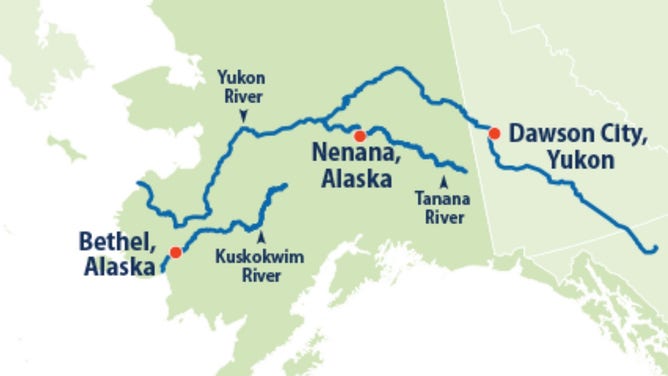‘Mercury bomb’ threatens food chain as Arctic thaws, researchers warn
According to the National Institute of Environmental Health Sciences, mercury can be toxic to organisms. In humans, it can cause problems in the central nervous system, cardiovascular system, kidneys and liver. Fish that eat smaller organisms tend to have the highest amounts of mercury.
Weathering the bitter cold in remote Alaska
Rural Alaskan resident Salina Alsworth says traveling to her village of Port Alsworth is only possible by small aircraft. Alsworth notes that what is considered normal in Southwest Alaska is viewed as extreme weather in other parts of the world. Those in the community prepare well in advance for winter and get around by foot, four-wheeler, or snow machine depending on the severity of conditions.
Some scientists are warning that thawing of the Arctic and other northern latitudes is helping to release vast amounts of mercury into the environment, posing a danger to the ecosystem and ultimately the food chain.
In details released in a study by researchers at the University of Southern California (USC) Dornsife College of Letters, Arts and Sciences, authors said mercury, from both natural and human activities, has collected under the surface for decades but is now slowly being released.
Despite the region’s remoteness, millions live off of watersheds that are connected to the Arctic, where fishing, hunting and other land uses are essential.
"There could be this giant mercury bomb in the Arctic waiting to explode," study co-author Josh West, professor of Earth sciences and environmental studies at USC Dornsife, said during a recent interview.
ANTARCTICA’S ‘DOOMSDAY GLACIER’ IS MELTING AWAY DIFFERENTLY THAN SCIENTISTS FIRST THOUGHT
According to NOAA data, the Arctic is warming twice as fast as other regions of the planet, which is causing permafrost to thaw.
Permafrost can extend from just a few feet to thousands of feet below the surface, where the soil temperature has remained below freezing for at least two years.
As the layer thaws, it releases elements such as mercury and carbon that have been trapped for hundreds, if not thousands, of years.
"Decades of exposure, especially with increasing levels as more mercury is released, could take a huge toll on the environment and the health of those living in these areas," Smith stated.

Partially melted and collapsed lithalsas - heaved mounds found in permafrost - left circle-like structures on the tundra, Svalbard Archipelago, Norway.
(Photo by: Sven-Erik Arndt/Arterra/Universal Images Group via Getty Images / Getty Images)
NORWEGIAN CRUISE SHIP DAMAGED AFTER STRIKING ICEBERG IN ALASKA
The study highlighted rivers such as the Yukon and the Koyukuk, which had high mercury levels in samples, consistent with previous research.
The Yukon River stretches nearly 2,000 miles from northwestern Canada to the Bering Sea and is home to dozens of species, including various types of salmon.
The study did not explore animal mercury levels, which are also suspected to be on the rise.
"Decades of exposure, especially with increasing levels as more mercury is released, could take a huge toll on the environment and the health of those living in these areas," Smith stated.

Alaska river map
(EPA / FOX Weather)
